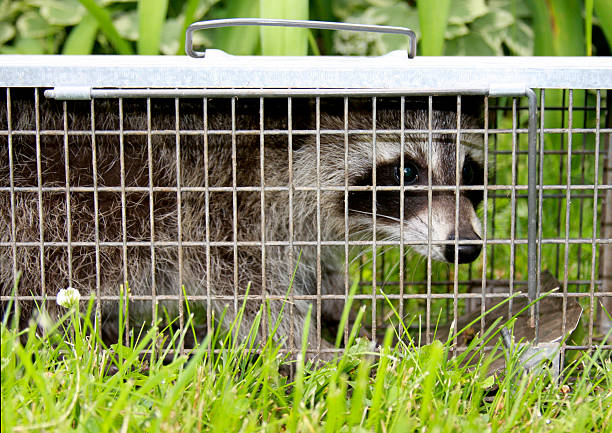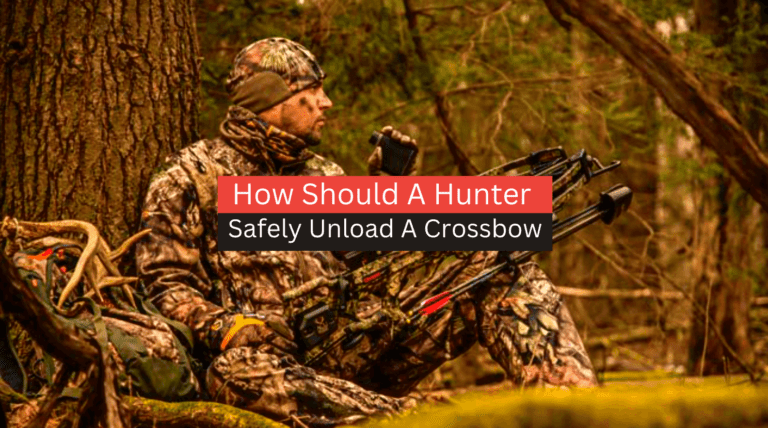As humans, we often share our outdoor spaces with wildlife, including raccoons. While these masked critters may seem cute and harmless, their presence can become troublesome when they become trapped in man-made structures like attics or garbage cans.
In this guide, we will be discussing what to do if you find a trapped raccoon on your property—from prevention methods to safe release techniques.
What to do with a trapped raccoon?
If you have caught a raccoon in a trap, there are several things you can do to safely and humanely handle the situation. The following are some of them:
Identify if the raccoon is really trapped
Before taking any action, it is important to first identify if the raccoon is actually trapped. It is possible that the raccoon simply stumbled into the trap and has not activated it.
You can check by observing the behavior of the raccoon. If it appears to be trying to escape but is not successful, then it is likely trapped.
Another way to confirm is to approach the trap cautiously and from a safe distance and observe if the trap door has been triggered or not.
Avoid trying to handle the raccoon on your own
It is important for individuals to avoid trying to handle a trapped raccoon on their own. Raccoons can be unpredictable and may become aggressive when trapped.
Handling a raccoon without proper equipment and training can lead to injury for both the individual and the animal. It is important to prioritize safety for both the individual and the trapped animal.
Contact professional wildlife removal services.
If you find yourself with a trapped raccoon on your property, it is important to avoid trying to handle the animal on your own. Instead, it is best to contact professional wildlife removal services for assistance.
These experts have the knowledge and tools necessary to safely remove the raccoon without causing harm to you or the animal.
They also know the state and local laws about catching and releasing raccoons, which will make sure that the process is done legally and ethically.
Check state and local laws regarding trapping and releasing raccoons
It is important to check local and state laws before attempting to trap and release a raccoon.
Laws and regulations vary by location and may prohibit the trapping and releasing of certain wildlife species.
Always be careful when dealing with a trapped raccoon and call a professional wildlife removal service for help to make sure the animal is set free in a safe and humane way.
Always be careful when dealing with a trapped raccoon and call a professional wildlife removal service for help to make sure the animal is set free in a safe and humane way.
By doing these things, you can safely and effectively get rid of raccoons on your property and stop them from coming back.
Use caution when releasing the raccoon
Once the raccoon has been safely trapped, it is time to think about releasing it back into the wild. However, care must be taken during the release process to ensure everyone’s safety.
Before releasing the raccoon, check to make sure the area is clear of people and pets and that there are no potential hazards nearby, such as busy roads or bodies of water.
Slowly and cautiously open the trap door, stand back, and wait for the raccoon to exit on its own.
Do not attempt to touch or handle the raccoon, as it may become agitated or defensive. After the raccoon has left the trap, make sure to secure the door to prevent other animals from getting in.
Remember to always prioritize safety when handling wild animals, and if you are not comfortable doing so, contact a professional wildlife removal service to help you.

Stay Safe and Keep Others Safe
When dealing with a trapped raccoon, it is vital to prioritize safety, not just for yourself but also for others around you.
The last thing you want is for the situation to escalate and turn dangerous. So, make sure to keep your distance and not attempt to handle the raccoon on your own. Instead, contact professional wildlife removal services to handle the situation safely and correctly.
By paying attention to safety rules and procedures, you can make sure that everyone stays safe as you deal with a trapped raccoon.
Remember, the ultimate goal is to help the animal and protect public health and safety simultaneously.
Secure your property to prevent future raccoon problems
Once you have successfully trapped a raccoon on your property, it is important to secure your property to prevent future raccoon problems.
The first step is to secure all of your garbage cans by placing them in a rack or tying them to a post. Raccoons are known for tipping over garbage cans in search of food, so ensuring that they can not reach them is essential.
Another effective way to prevent raccoons from entering your property is to use home remedies such as ammonia, vinegar, ground-up garlic, powdered cayenne pepper, blood meal, or dirty cat litter. Sprinkle these natural deterrents along your property’s boundaries, near potential entry points, and around garbage cans to help keep raccoons away.
Habitat modification is also important for preventing raccoon infestations. Make sure that any access points, such as holes or gaps in fences, walls, or roofs, are sealed up. Trim back any trees or shrubs that could provide raccoons with easy access to your roof or attic.

I am Sam Billings, an entrepreneur who runs a printing business. In my free time, I enjoy the thrill of the hunt and often spend hours pursuing game. I am passionate about hunting gear and equipment, and I take great pleasure in helping fellow hunters find the right gear for their needs. From rifles and scopes to clothing and accessories, I am always happy to share my knowledge and expertise.






